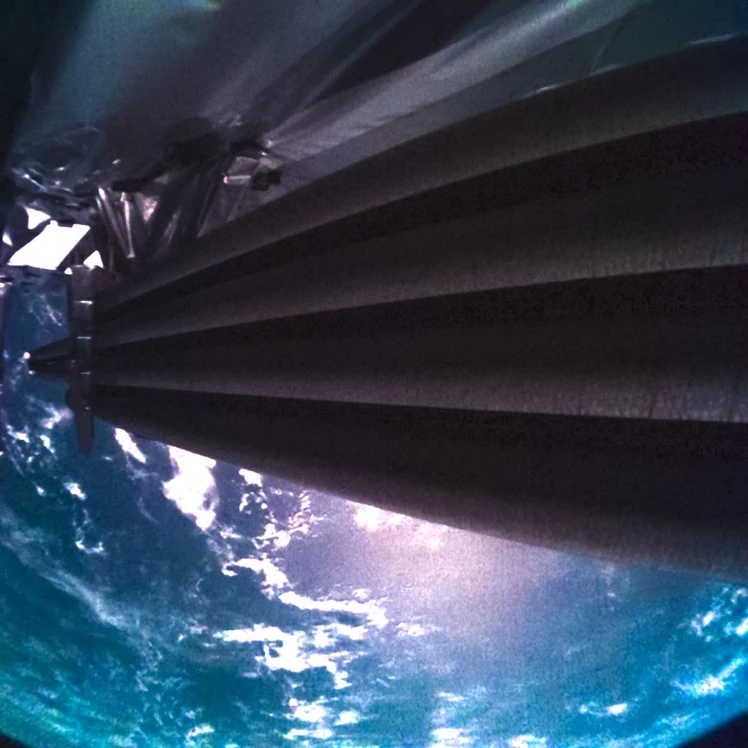ESA's Jupiter Icy Moons Explorer (Juice) deep-space probe is on its way to Jupiter and has sent back its first selfies. Captured by Juice monitoring camera 1 (JMC1) located on the front of the spacecraft, the new images show the Earth and Juice's deployed solar array.
Juice began its eight-year voyage to Jupiter at 2:14 pm CEST (12:14 GMT) on April 14, 2023, lifting off from Europe's Guiana Space Centre at Kourou, French Guiana atop an Ariane 5 rocket. After making flybys of the Earth, Moon, and Venus to build up enough velocity to reach its destination in 2031, the solar-powered, uncrewed probe will make multiple flybys of Jupiter's moons Callisto, Europe, and Ganymede before going into orbit around Ganymede.
Currently, Juice is deploying its instrument booms and antennas as part of its commissioning process. To help with this, the spacecraft is equipped with two monitoring cameras, JMC1 and JMC2. JMC1 looks diagonally at one of the solar arrays and has a field of vision in which deployed antennas will be visible. JMC2 is on top of Juice and is designed to monitor the complex deployment of the 52-foot (16-m) Radar for Icy Moons Exploration (RIME) antenna.

JMC-1 captured three of the four images that ESA has released, showing Earth as it recedes into the blackness of space, the solar array. Meanwhile, JMC-2 snapped a shot of the undeployed RIME antenna. The two monitor cameras will also send back images of the flybys en route to Jupiter. As the mission progresses, a high-resolution scientific camera will come online to record the Jovian moons close up.
Source: ESA








